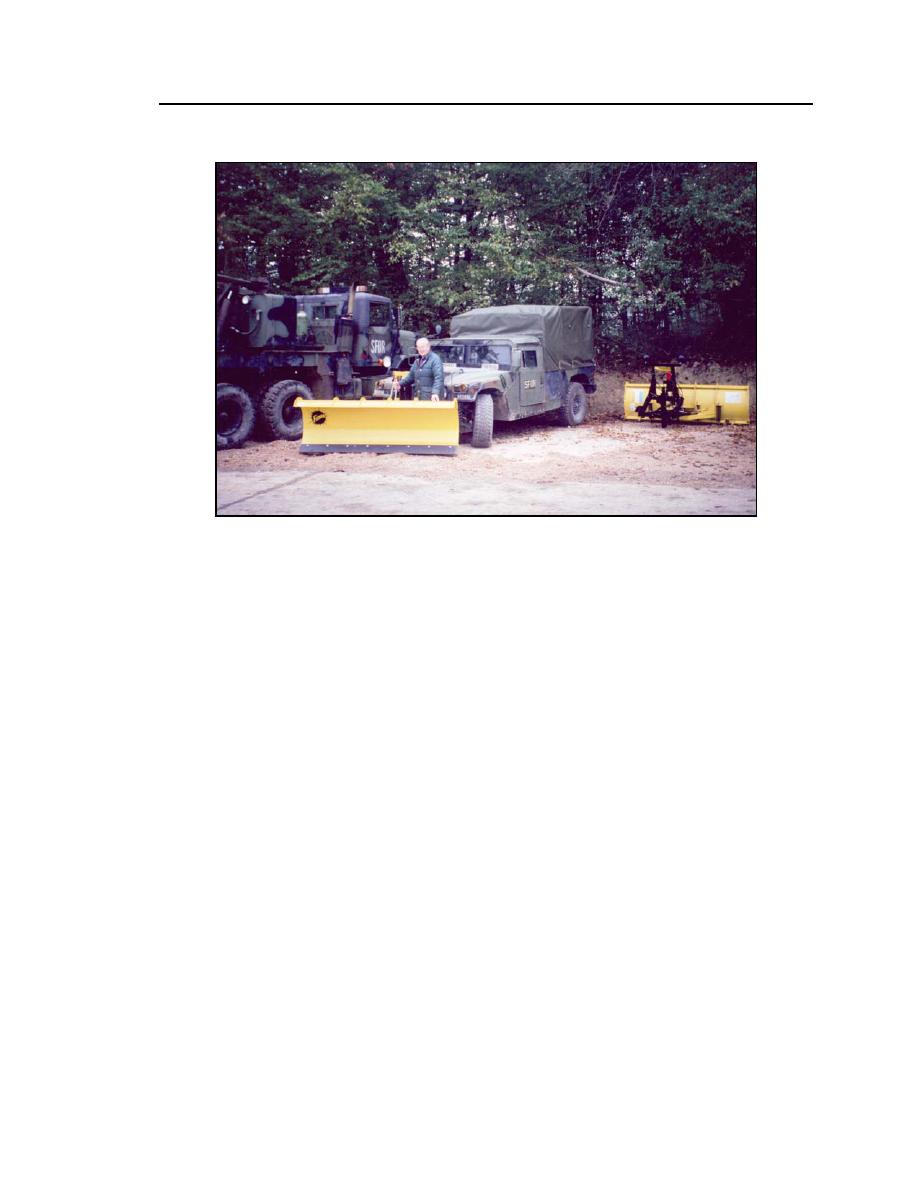
Snow and Ice Control
35
Figure 17. The author inspecting snowplows in Bosnia. These snowplows
require their drivers to complete SNIC training.
4. The U.S. Army maximum allowable speed when plowing snow is 10 mph.
In a ten-hour day, this provides for plowing an average of 100 miles of one lane
of a roadway. Slower speeds are always required for suspected obstacles, slower
vehicles, bad weather, and other manmade or natural obstructions. The time of
day, the terrain, the weather, the surfaces, the driver's experience, and other
things must be considered. Though difficult to do, assigning the same drivers to
the same sections of roadways to be plowed and salted/sanded greatly enhances
the success of the SNIC operations.
5. When making left-hand turns from a two-lane highway onto another
roadway, drivers must slow down, watch for oncoming traffic as well as passing
traffic, raise the plow before starting the turn, and lower it after crossing the on-
coming lane. Normally when plowing snow and having to cross intersections it is
hazardous to have to back up and such maneuvers should be avoided if possible.
Instead, right-hand turns should be made; however, with the 5-ton truck mounted
with snowplow, a lot of room is required and such a turn should not be made
until the traffic is clear from the lanes of the right-turn road. A ground guide is
required if the driver is forced to back up for any reason.



 Previous Page
Previous Page
